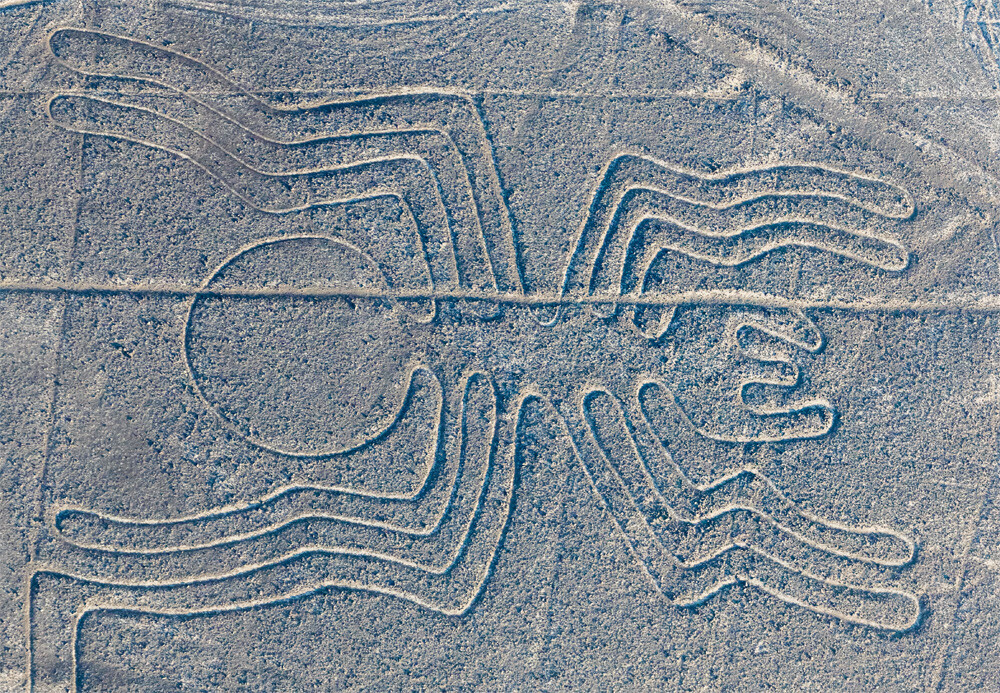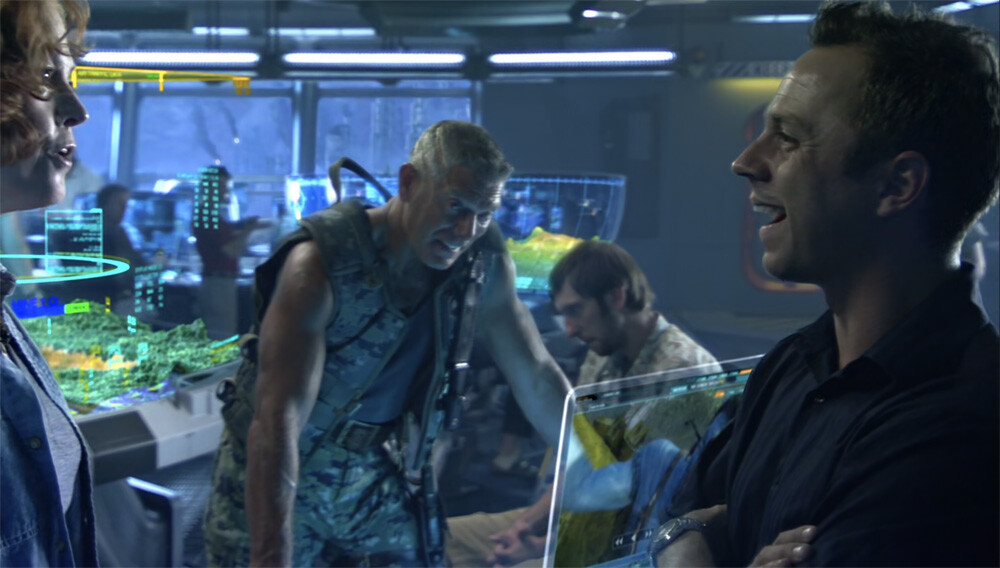5 Marvels Of History That Got Trashed By Morons

We like telling stories of thoughtless destruction -- like, say, someone slipping on a banana peel and falling headfirst through a Picasso canvas -- because sometimes, pain must be shared. But today, we're not looking at valuable comic books turning to papier-mâché or classic cars accidentally dropped off a cliff. We're looking at irreplaceable wonders from far back in history, stuff that lasted millennia until it came up against true idiocy. Like when …
The Taliban Blew Up Afghanistan's Giant Buddhas
If you travel through Asia, you'll see a lot of people are fans of giant statues of Buddha. In China and Burma and Thailand and Sri Lanka, you'll see these huge sculptures of the holy man, some of them marvels of modern engineering, and others centuries old. But when we're talking giant statues, "centuries old" is still a pretty broad timeframe. The US is "centuries old," but then you run into a bronze Buddha in Japan that's 500 years older than the US.
Don't Miss
The Buddha statues we want to discuss today were built 500 years before even that Japan statue. More than 500 years -- they were built in the sixth century. Here's what the Buddhas of Bamiyan in Afghanistan looked like, still going strong in 1889:

A century later, they'd undergone some weathering. Here's the one on the right in 1977:

Since 2001, however, that nook instead looks like this:

Ryan Menezes
Yes, the statues survived more than a millennium of Afghanistan shenanigans, including Genghis Khan sacking Bamiyan and the Mughal emperor Babur ordering that they be beheaded. Then came the Taliban. The statues were idols, declared the Taliban, and therefore had to be destroyed in the name of Islam.
Objections came from all over the world, including all over the Islamic world -- Muslims in general saw no threat from the statues, and there had in fact been no Buddhists in Afghanistan to even worship at Bamiyan for almost a thousand years. But still, the Taliban figured the giant symbols of a culture other than theirs had to go. They blew the statues up. Plain dynamite didn't do the trick, so a combination of explosives packed into holes, mines, and rockets had to bring them both down.

via Wiki Commons
There's been talk of rebuilding the statues, and people got to work on the project in 2013 ...

Ryan Menezes
... but historians said, um, please stop that. You can't just build a replacement using modern methods and call that a restoration.
And of course, in the summer of 2001, the international community considered this dangerous "Taliban" group, who seemed big fans of bringing down twin towering structures. Maybe we should do something about them, they wondered. But then they immediately got distracted, because it was shark week.
The US Army Paved Babylon And Put Up A Parking Lot
In the years that followed, we all went on to hear so many stories of ISIS destroying ancient sites in Iraq and Syria, and it sometimes felt worse than the usual murder. Because yeah, murder is bad, but in the murderer's defense, the victim was definitely going to die regardless within a few decades one way or the other.
Okay, it sounds like we were being sarcastic there, but the fact is crimes against cultural heritage really are considered a special kind of evil because you're destroying something irreplaceable that's of great significance and that should have outlasted all of us. So when, say, the US went into Iraq in 2003, hundreds of thousands of Iraqis may have resultantly died, but at least the Americans didn't go out of their way to raze millennia-old historical sites, right? Right?

The illustration above is not, in fact, some site in Iraq that existed right before the 2003 invasion but is the legendary Hanging Gardens of Babylon, one of the Seven Wonders of the Ancient World. We aren't totally sure if these gardens actually existed, but if they did, we have a good idea where they were. And if they didn't, the excavated city of Babylon still has thousands of years of history, going all the way to Hammurabi and beyond. In 2003, the US military built a base on the ruins.

Assessing the place years later, the UN pointed out all kinds of damage, and the US actually agreed to pay close to $1 million in response. "We had to occupy it to protect it!" an army spokesperson still insisted. Maybe that's true. But they also paved the site to build parking lots and helipads and built trenches and staked in barbed wire fences. They dug up dirt that held all kinds of archaeological fragments – fragments that, said one unnamed expert, "belong in a museum" – and then used that dirt to fill their sandbags.
If that bit about the sandbags sounded especially bad to you, wait till you hear this next story:
A Mayan Pyramid Was Destroyed For Gravel
The biggest pyramid in the world isn't in Egypt -- it's in Mexico. Though the Great Pyramid of Giza is the tallest pyramid (not counting pyramid-like modern skyscrapers), and it's vastly older than any New World pyramids, Mexico's Great Pyramid of Cholula is much wider, so if you rate pyramids by how much brick each has, Mexico is king. A thousand miles east of Cholula, Belize also has some Mesoamerican pyramids, including one at a site called Nohmul. We'd love to tell you more about it, but there's not much point, since a stone company mostly demolished it.
Seriously, we can't even find photos of the pyramid before the diggers came in (ones you see online are mostly mislabeled). Though it was one of the biggest pyramids in the country, and was 2,300 years old, we guess it wasn't the most photogenic site since it still had a bunch of earth and plants clumped up along its sides. Still, everyone knew it was an ancient pyramid, and not a 100-foot molehill. That included the fine people at De-Mar's Stone Company, who swept in to loot the place.
There's some historical precedent behind ripping apart one marvelous structure to build another. We've told you before about how the Romans stripped stone from the Colosseum to build the Vatican. But at least there, they were reusing the material because they needed a specific rare type of stone. De-Mar's Stone Company smashed the pyramid apart and used the broken pieces as road fill.
Livid archaeologists noted how absurd this was. The pyramid itself was made from limestone that Mayas thousands of years ago quarried with great difficulty. If you want limestone slabs today, it's infinitely easier to get them now, because we have today's tech. You don't need to scavenge. And if it's gravel you want, well, no one needs to crush high-quality limestone to make their own gravel. You buy limestone slabs by the square foot, but you buy crushed limestone by the ton, $30 a ton, it costs practically nothing. You don't have to steal the Declaration of Independence just because the KFC where you work needs napkins.
We can only assume that this was a deliberate affront to the Mayan gods, perhaps ordered by a rival god. Probably Camazotz, the weirdo.
People Keep Driving On Nazca Lines
The Nazca Lines are a series of millennia-old glyphs in the deserts of Peru, which you only hear of every few years when someone plows into them. Here's what one 150-foot-long glyph looks like from above:

It's impressive that the Nazca people were able to draw anything without being able to look down and check their work, and it's a mystery why they bothered, since no one could see the finished product till air travel many generations later. Were the Nazca drawing their lines for the gods? Were they trying to communicate with aliens? Were the Nazca themselves aliens? (This last question is very popular with a certain type of theorist.)
The lines are potentially super fragile. They aren't carved into rock or even dug deep -- they were made by just brushing the sand aside and yet have lasted all this time. Anyone who strolls by could ruin them. It's just as well, then, that there's not much reason to stroll by, since you can't appreciate them from the ground. That didn't stop Greenpeace from coming in 2014. Their mission: To lay down a sign telling people about something called renewable energy, which we had no other way of learning about:
The letters weren't permanent. The damage from their foot traffic was. Pretty off-mission for a group committed to preserving the Earth (or, pretty on-mission for a group who want to undo the works of man). Still, at least Greenpeace had a reason to be there, even if a dumb one. Our next unwitting vandal ended up on the lines without even realizing it. In 2018, Jainer Vigo drove his truck right over some of the lines, messing them up just as if he'd shaken an Etch-a-Sketch:
As you can see, a highway runs super close to the lines, but they're still easy to avoid if you just stay on the road. Vigo said he went off-road because of "a mechanical problem." Another possibility: He made his own route because he wanted to skip paying the toll. He ended up paying a $1,550 fine, which is a little more than a typical toll. Less than what Greenpeace got fined, though ($200,000), and less than the cost of commissioning new art from the Nazca (incalculable, as aliens answered their call and took them away).
Australian Miners Blew Up A 46,000-Year-Old Site, And Got Nothing Out Of It
We've delved pretty far back into history today. But now we're going way into pre-history, to a site called Juukan Gorge, where humans sheltered for 46,000 years, even through the last ice age. It's a sacred site for the indigenous Puutu Kunti Kuurama and Pinikura people, whose ancestors lived there, and a source for relics and human remains. So when mining company Rio Tinto pursued digging rights there, the PKKP sued to stop them. In the meantime, Rio Tinto stuffed the caves with explosives then said it was too late to remove them and just slammed down on the detonator.
The target of this mining operation was reportedly $100 million of iron ore. Now, if you're wondering about making next month's car payment or just buying lunch, $100 million must sound like a fortune, but let us assure you, that is not a large sum when we're talking mineral deposits. It might well cost more than that just to build a new mine and extract the iron. And iron, of course, is not a rare metal, and Australia in particular is bursting with the stuff.
What we're saying is, maybe that mining company in Avatar had a point about how much they needed that unobtanium, but Rio Tinto are 100 percent dicks.

20th Century Pictures
In the end, after their explosive outburst, the company wasn't allowed to go forward with mining after all, so the happy ending to this story is that no one benefited from the fiasco whatever. The CEO, the chairman, and other executives had to step down. Parliament also ordered Rio Tinto to rebuild the cave system.
Yeah, you heard that right: They're supposed to rebuild ... a cave system. Uh, good luck with that, Rio Tinto. Hope you have 60 million years and the mighty elements of creation on your side.
Follow Ryan Menezes on Twitter for more stuff no one should see.